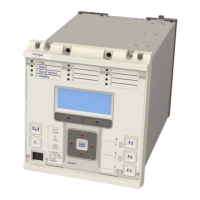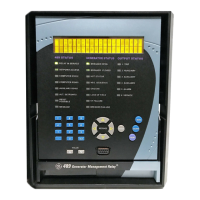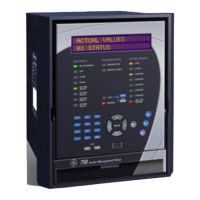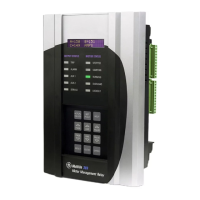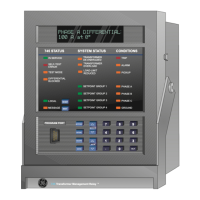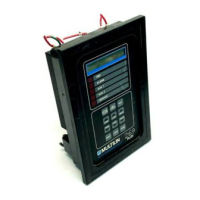3.2.3.2 EARTH FAULT FIXED REACTANCE LINE TILTING
Each zone has an independent setting to set the tilt angle (σ) of the Impedance Reach line of the quadrilateral
characteristic. If dynamic tilting is disabled, the characteristic uses this setting to apply a fixed tilt to the top line.
The tilting angle is with reference to the fault current I, and is defined by:
Tilt angle = setting (σ) =
Ð
Iph/I
The setting range is +/- 30°. A negative angle sets a downward tilt and a positive angle sets an upward tilt.
Operation occurs when the operating current I lags the polarizing current Iph.
The Impedance Reach line of the characteristic in the Z1 plane is shown in the following diagram:
Figure 54: Impedance Reach line in Z1 plane
For all V/I vectors below the Impedance Reach line, the following condition is true:
Ð
(V/I-Z) ≤ σ
or
Ð
(V – I.Z) ≤ I + σ
If mutual compensation is not applied, for an earth-fault loop
V = Vph
and
I = Iph + k
ZN
.IN
so the signals fed into comparator are:
S1 = Vph – Iph.Z
replica
S2 = Iph
Ð
σ
where: Z
replica
is the replica forward reach
The impedance below the Impedance Reach line is detected when the angle between the signals is less than 0°:
For products that have mutual compensation, if the mutual compensation is applied, then
Z
replica
=Z(1+k
ZN
.IN/Iph+k
ZM
.I
M
/Iph).
Chapter 7 - Distance Protection P446SV
132 P446SV-TM-EN-1
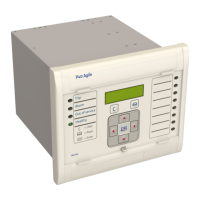
